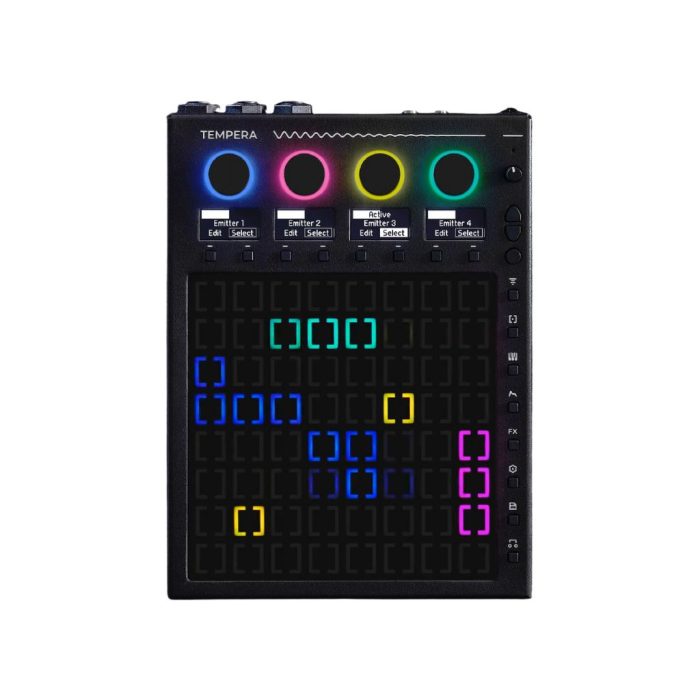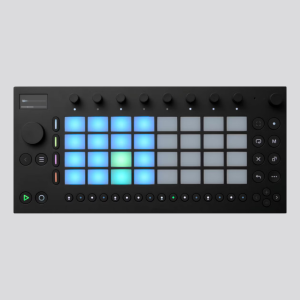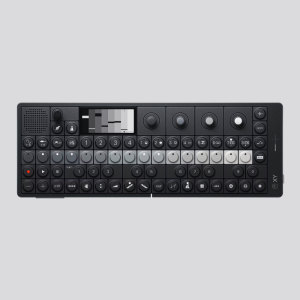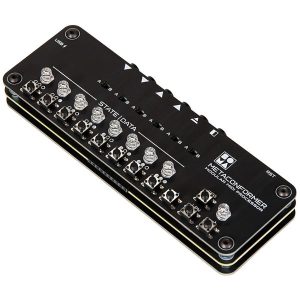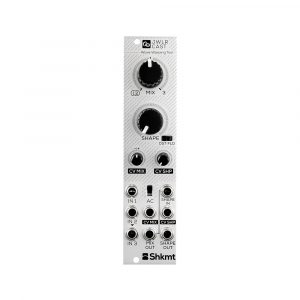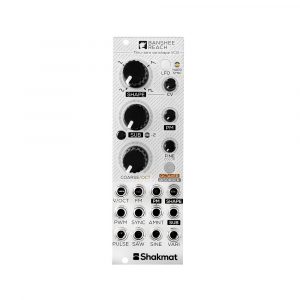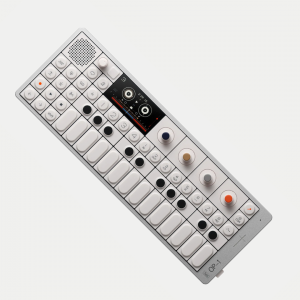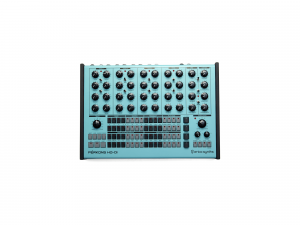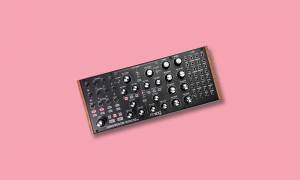Granular, but make it tactile: BeetleCrab Tempera turns granular synthesis into a playable, hands-on sonic canvas.
Don’t let its four screens and novel approach intimidate you: BeetleCrab’s Tempera is one of the most playable, powerful, and intuitive hardware approaches to granular synthesis to date. While it may not be immediately obvious what Tempera actually is, the name itself provides a surprising amount of insight. Rather than programming a typical grid controller, using the instrument instead feels like something between painting (see: tempera paint) and manipulating a bunch of supersonic tape machines. It’s a rare achievement: one that helps redefine hardware-based granular synthesis, made all the more impressive by the fact that it comes from such a small and independent team.
Deceptively minimalist, Tempera’s 8×8 multitouch grid and clean, functional interface give little indication of the powerful, chaotic world it holds inside. At its core, Tempera is an eight track granular synthesizer. From a technical perspective, it means business: Running on a powerful ARM processor and processing audio at 48 kHz / 32-bit, it boasts a global stereo pool of 4096 grains that can be distributed across 16 polyphonic voices. Each voice features an envelope and multi-mode filter, as well as 10 modulators with a range of shapes and modulation destinations. Its integrated FX chain features excellent (and simultaneous) chorus, delay and reverb effects. Suffice it to say, there’s an endless amount of pigment and canvas included in this paint set.
Tempera turns granular synthesis into an interactive, tactile and performable experience. You don’t just trigger grains—you push, scatter, stretch and throw them into motion. Essentially, each of the eight columns on the grid represents the slices of a sound; four color-coded emitters, each of which behaves independently, then dance atop this bed of sample slices. When an emitter is assigned to a cell, it begins generating grains based on that audio fragment, following the rules set by its granular parameters—grain density, playback speed, jitter, and the like.
The grid isn’t just a static trigger surface; it’s an interactive canvas where movement plays a crucial role. Emitters can be set to toggle, latch, or respond instantly to touch, allowing for a range of performance styles. A single tap might trigger a rhythmic pulse, while a slow drag can stretch and dissolve a sound into an evolving drone. This hands-on, gestural approach makes granular synthesis feel less like programming and more like sculpting sound in real time.
And these emitters aren’t limited to moving vertically, as each emitter can blend grains from different sample columns. Features like Spray introduce controlled unpredictability by scattering grains outward from the selected cell, dispersing sound fragments in horizontal, vertical, or multidirectional bursts. Emitters can also be modulated to follow programmed motion paths, creating intricate but repeatable sonic patterns. By combining different emitter behaviors—such as setting one to Toggle for sustained textures, while another responds Instantly to touch—you can build evolving, layered soundscapes that shift between structure and unpredictability.
Navigating the Tempera is generally intuitive and quick, thanks to four OLED screens, and given how much can actually be tweaked here, getting around the menu system is surprisingly smooth. Interacting with granular synthesis can often be quite a cerebral experience—lots of numbers, precise grain adjustments, and trial-and-error refinement. The Tempera instead leans toward a more instinctual, hands-on approach. There’s naturally a fair amount of preparation and parameter adjusting to get the most out of the instrument, but as someone rather allergic to menu diving the Tempera was remarkably simple to get the hang of. You’ll likely want to go through the included (and excellent) printed manual to understand how the emitters, modulators and macros work. But crucially, the act of actually playing the instrument is more about touch and experimentation than it is about programming.
Tempera is an extremely powerful textural tool. With onboard sampling capabilities (including stereo line-in and a built-in mic), it can capture new sounds on the fly and instantly integrate them into its granular engine. A few minutes of experimentation can yield unexpected soundscapes: radio static morphing into rhythmic pulses, vocals dissolving into spectral chords, field recordings becoming percussive elements. Because of its ability to sync parameters like grain length and emitter behavior to BPM, it’s also tons of fun for slicing breakbeats and other rhythmic loops. The ability to resample its own output, meanwhile, opens many doors for layering, feedback loops, and iterative sound design.
The Tempera offers flexible playability options, despite being fundamentally a keyboardless synthesizer. While it easily connects to external controllers (via USB-B, USB-A Host, and TRS MIDI connections—both Type A and B, in fact), the grid itself can be configured as a playable surface. The user can designate portions of the grid (or its entirety) to function as a note input interface, effectively making the instrument self-contained. This dual functionality is managed through an efficient keyboard settings button, letting users balance grid space between note input and the device’s core function of hosting sound-generating emitters.
Fortunately, storage isn’t an issue either, as Tempera comes with 8GB of internal memory and supports essentially endless expansion via microSD. When connected to a computer, it can be set to USB Bridge mode, allowing the computer to read and write directly to Tempera’s micro SD card. Though Tempera is an exceedingly portable and solid device, there’s no built-in battery, so you’ll need an external USB power solution to use it off the grid.
Since its release, the developers have also been proactive in adding features and fixes to the Tempera firmware. The device’s 2.1 update brings with it (among many other improvements) a particularly welcome new feature: live audio processing, turning Tempera into a realtime, tempo-synced live granular FX processor. This makes Tempera an extremely powerful tool for processing both electronic and acoustic instruments. In terms of the former, being able to process an audio stream and receive MIDI note information from a single device is incredibly fun and rewarding.
Sitting down with the device and a pair of headphones, it’s easy to get lost in Tempera’s swirl of sonics for hours on end. This is an instrument that doesn’t just play sound—it plays with sound, inviting experimentation in a way that few if any granular synthesizers do. Though a very different beast, much like the Synthstrom Deluge, the fact that Tempera even exists is itself something of a miracle; it’s the brainchild of a tiny team in Prague, but achieves a level of quality and depth befitting a much larger manufacturer. BeetleCrab may not have massive name recognition yet, but with Tempera, they’ve proven that innovation and craftsmanship aren’t exclusive to industry giants. Tempera is a strikingly new and comprehensive framework for interacting with granular synthesis.
